|
The Dinocerata is an extinct order of very large, herbivorous mammals, and was one of the first groups to evolve large body sizes after the extinction of the dinosaurs. They were eventually out-competed by the larger-brained rhinos and their relatives. Their relationship to other mammal groups is uncertain.
This is the skull of Uintatherium sp.
Order Dinocerata
Bridger Formation, Utah
Eocene, 50 Ma
Museum of Ancient Life, Utah
|

|
|
|
The condylarths, such as this Periptychus coarctatus, are a group of herbivorous, ungulate (hooved) mammals, possibly related to either the Perissodactyls or Artiodactyls (both are below).
Order Condylarthra
Denver Formation, El Paso Co., CO
Early Paleocene, 65 Ma
Denver Museum of Science & Nature
|
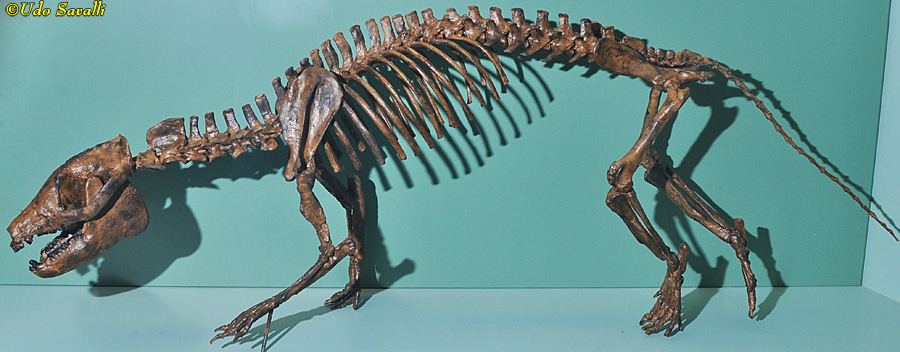
|
|
|
The perissodactyls are the odd-toed ungulates, meaning they have hooves and walk on their toes, most of the weight is borne on the middle toe, and if toe number is reduced, they usually have 3 or one toe per foot.
Horses (family Equidae) have long been used as an example of evolutionary change, with earlier horses, such as Mesohippus barbouri, being small forest browsers with shallow-rooted teeth and three weight-bearing toes per foot and later horses evolving to be large grassland grazers with deep-rooted teeth and a single toe. (Skeleton is 80% original)
Order Perissodactyla (horses, rhinos, & relatives)
White River Formation, Sioux Co., NE)
Early Oligocene, 32 Ma
Denver Museum of Science & Nature
|
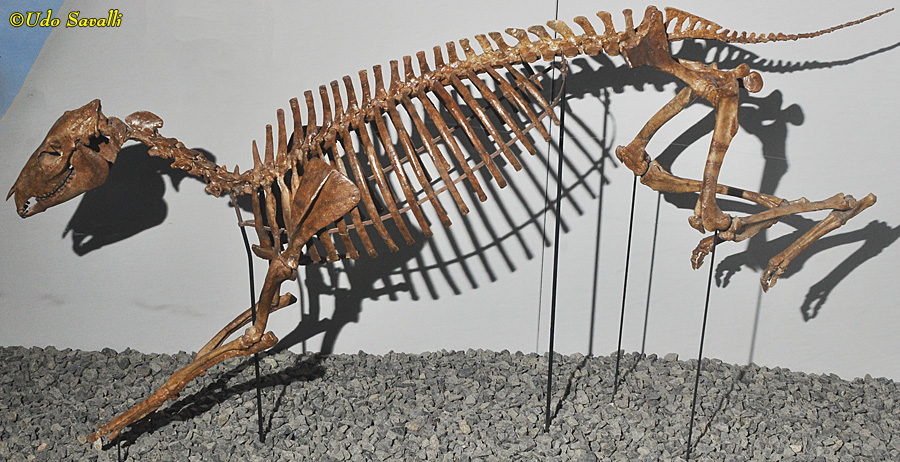
|
|
|
The evolution of the horse foot (carpal bones through phalanges), left to right: Hyracotherium grangeri (small size, 3 toes touch ground); Neohipparion leptode (1 toe on ground, other 2 elevated); Equus simplicidens (modern horse genus; only 1 toe).
Order Perissodactyla
North America
Period
MuseumInfo
|
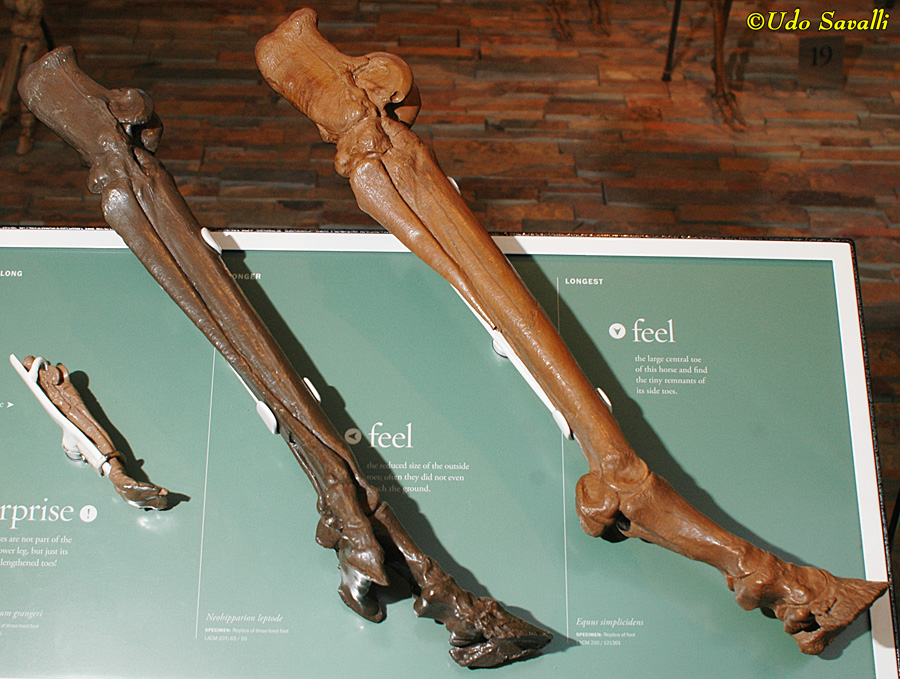
|
|
|
Hyracotherium grangeri has been called the "dawn horse" as it is one of the earliest horse ancestors.
Order Perissodactyla
Bighorn Basin, WY
Middle Eocene, 50 Ma
Los Angeles Museum of Natural History
|
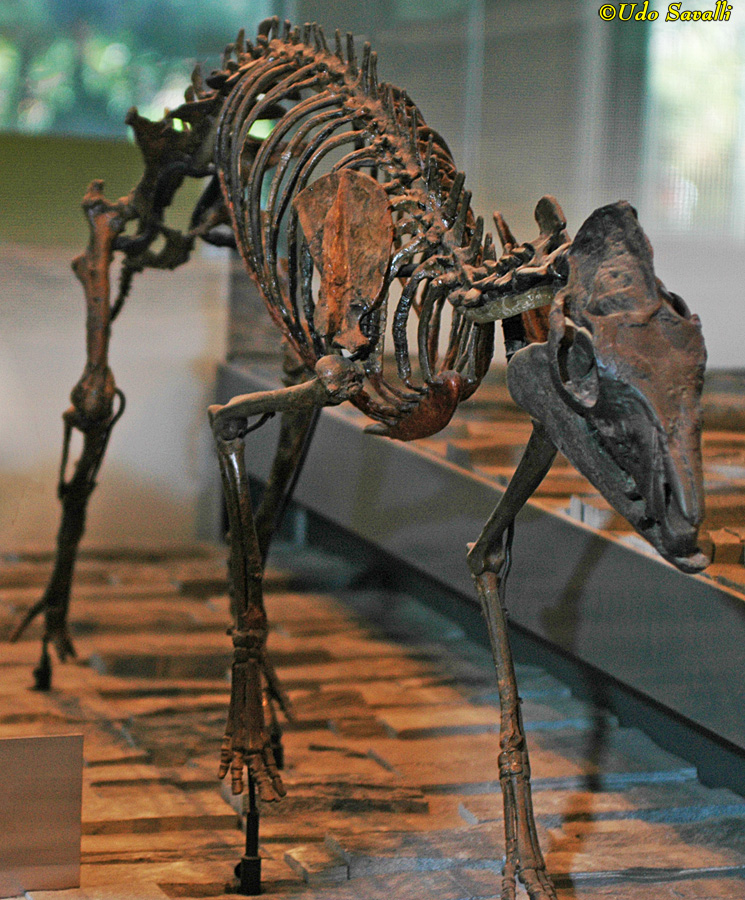
|
|
|
Miohippus annectens had 3 toes per foot, but only 1 bore weight.
Order Perissodactyla
Las Posas Hills, CA
Late Oligocene, 28 Ma
Los Angeles Museum of Natural History
|
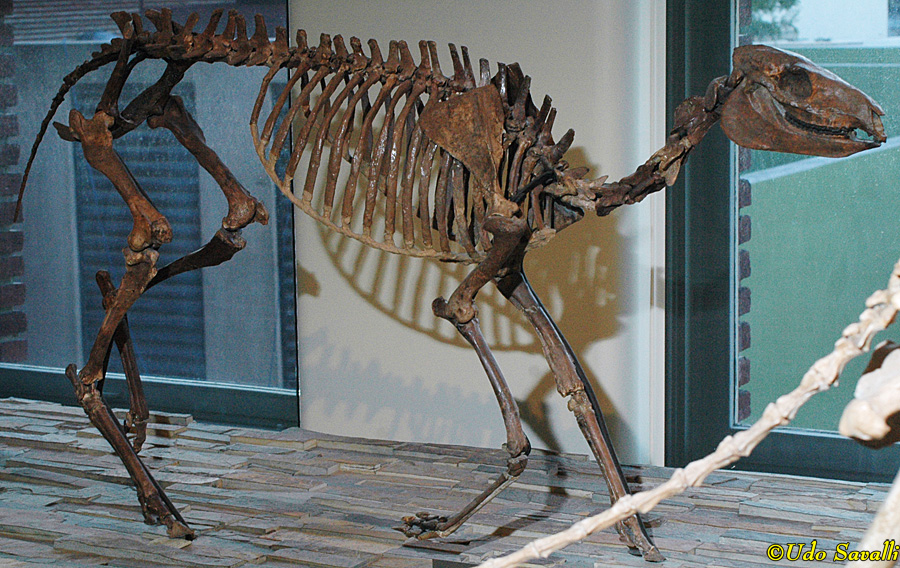
|
|
|
Neohipparion leptode also had two toes elevated, but had a deeper skull reflecting its deep-rooted teeth adapted for grazing grasses.
Order Perissodactyla
North & Central America
Mid-Miocene to early Pliocene, 16 Ma to 5 Ma
Los Angeles Museum of Natural History
|
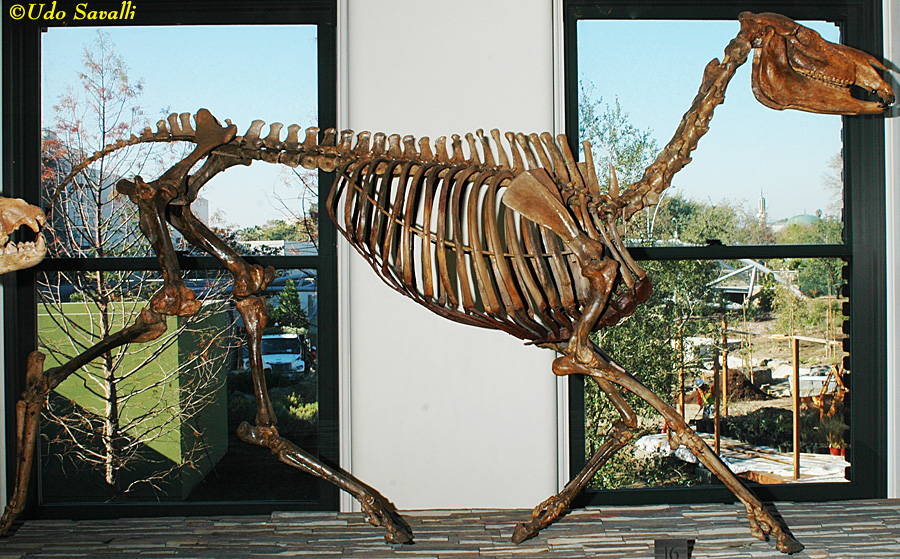
|
|
|
The modern horse genus Equus, such as the Western Horse Equus occidentalis, has only a single toe per foot, and a long, deep skull to accomodate the deep-rooted teeth that can withstand the wear from grazing on grasses.
Order Perissodactyla
La Brea Tar Pits, CA
Pleistocene
Page Museum, Los Angeles
|
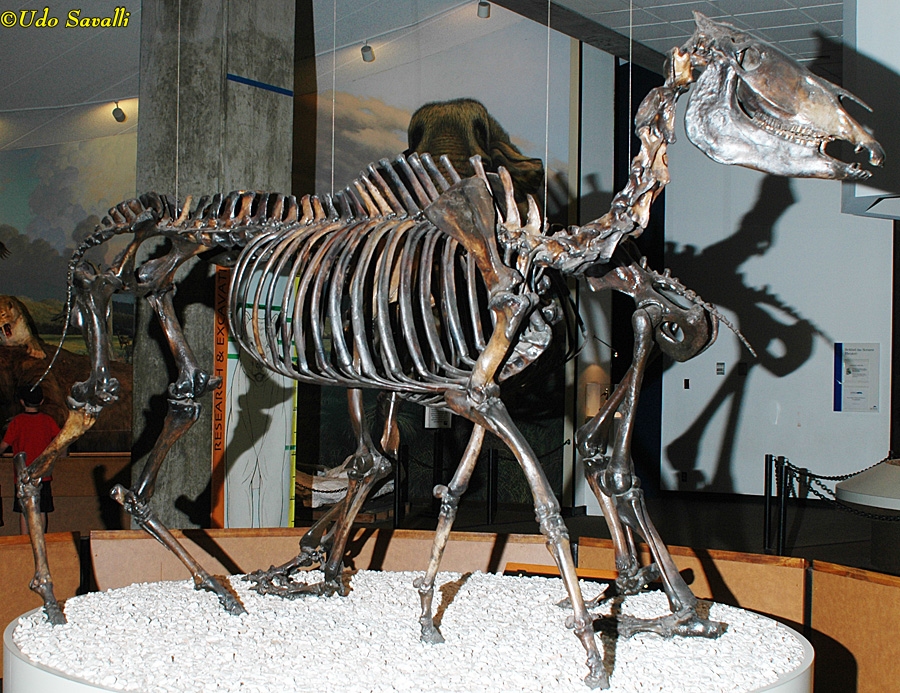
|
|
|
Brontotheres, such as these Megacerops acer, are extinct relatives of horses, although they are more rhino-like overall. The male is on the left, female on the right.
Order Perissodactyla
White River Formation, Weld Co., CO
Late Eocene, 35 Ma
Denver Museum of Science & Nature
|
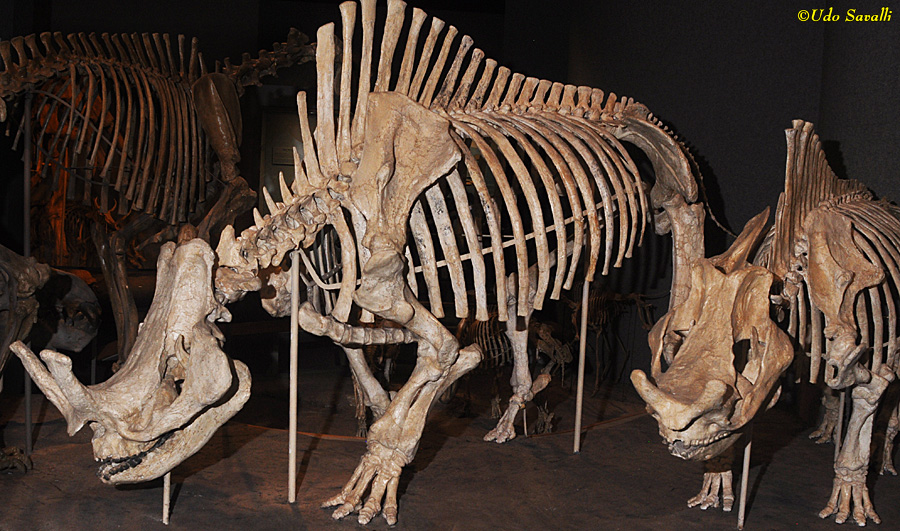
|
|
|
Skull of Diplacodon sp.; this genus lacked the nose horn of Megacerops.
Order Perissodactyla
Santiago Formation, California
Eocene, 42 Ma
San Diego Natural History Museum
|
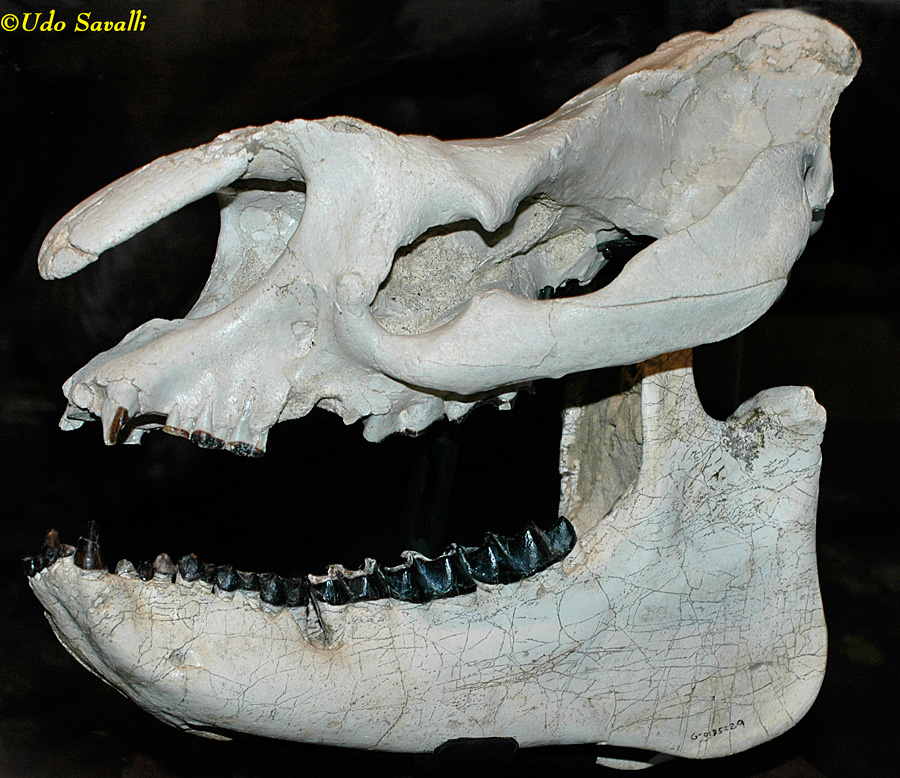
|
|
|
Trigonias osborni was a hornless rhinoceros.
Order Perissodactyla
White River Formation Weld Co., CO
Late Eocene, 35 Ma
Denver Museum of Science & Nature
|
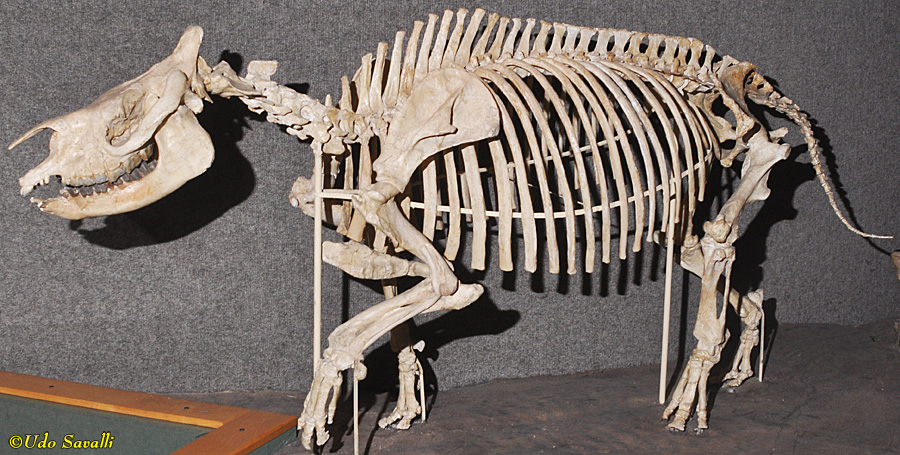
|
|
|
Teleoceras fossiger rhinoceros. It had a small nasal horn that is not preserved since rhino horns lack a bone core and are composed entirely of keratin. Note the 3 toes per foot.
Order Perissodactyla
Valentine Formation, Brown Co., NE
Middle Miocene, 13 Ma
Denver Museum of Science & Nature
|
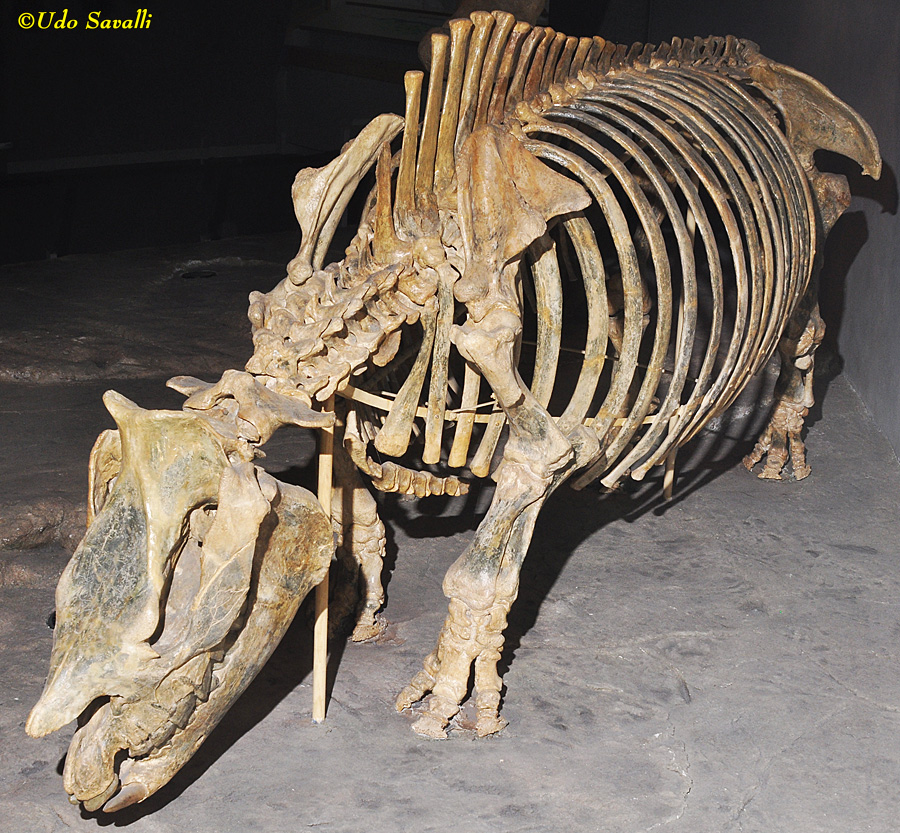
|
|
|
Menoceras arikarense rhinoceros (95% real).
Order Perissodactyla
Harrison Formation, Sioux Co., NE
Early Miocene, 20 Ma
Denver Museum of Science & Nature
|
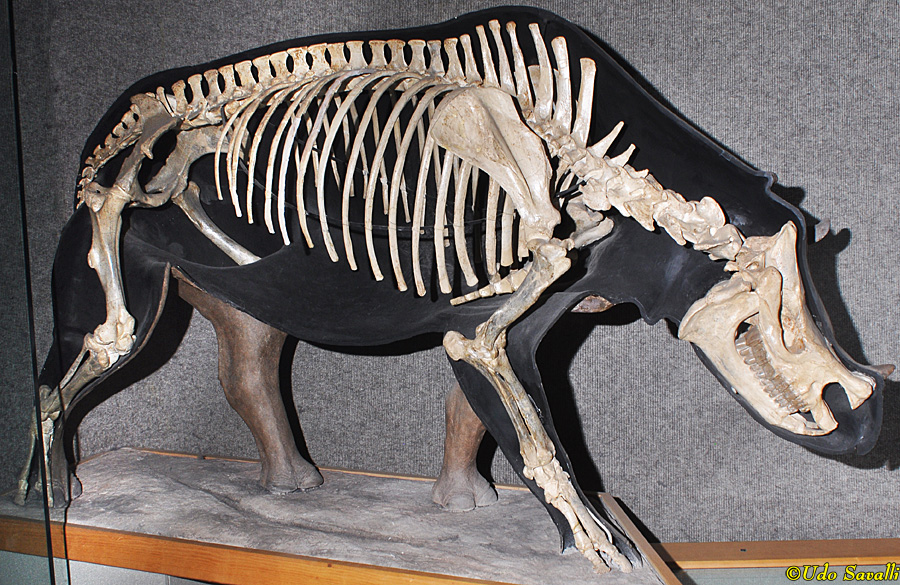
|
|
|
Hyracodon nebraskensis, a very primitive rhino, has been called the "running rhinoceros" due to a body shape that was more like early horses that lived at the same time.
Order Perissodactyla
South Dakota
Early Oligocene
Los Angeles Museum of Natural History
|
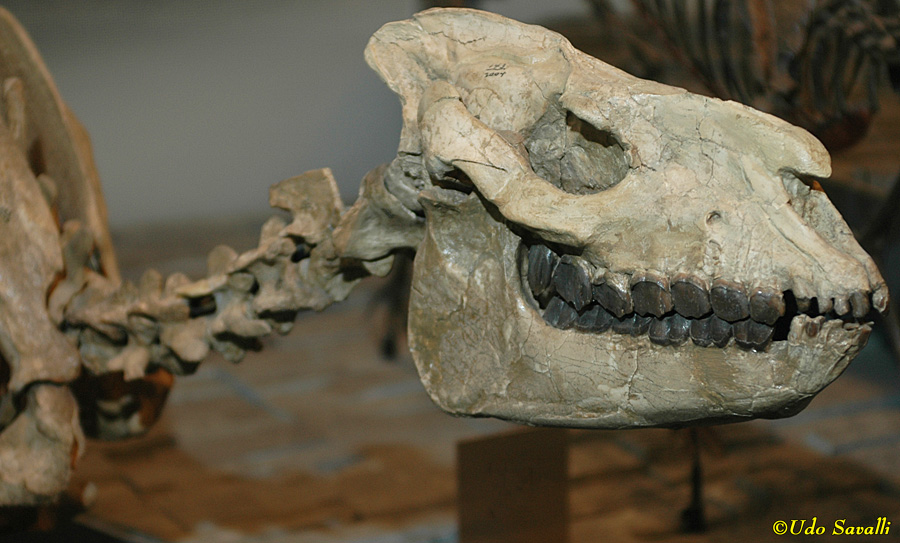
|
|
|
The whooly rhino, Coelodonta antiquitatis, had two horns on its head, as indicated by the roughened areas on its nasal and frontal bones.
Order Perissodactyla
Siberia
Pleistocene, 1 Ma
Museum of Ancient Life, Utah
|
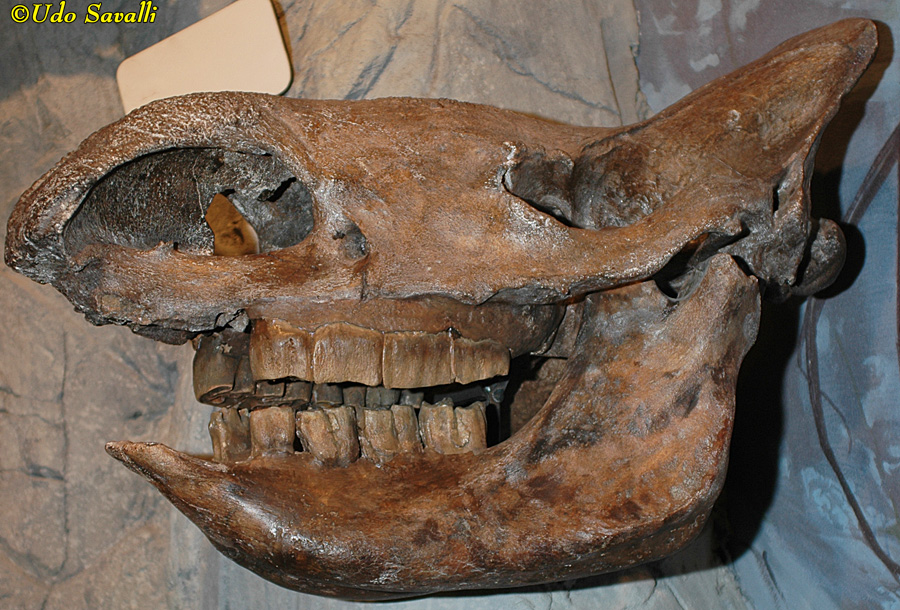
|
|
|
Chalicotheres, such as these Moropus elatus, were strange rhino relatives with long front legs, long necks and massive claws on their hands that they may have used for pulling down vegetation.
Order Perissodactyla
Harrison Formation?; Agate Springs, NE
Early Miocene, 21-19 Ma
Agate Fossil Beds National Monument
|
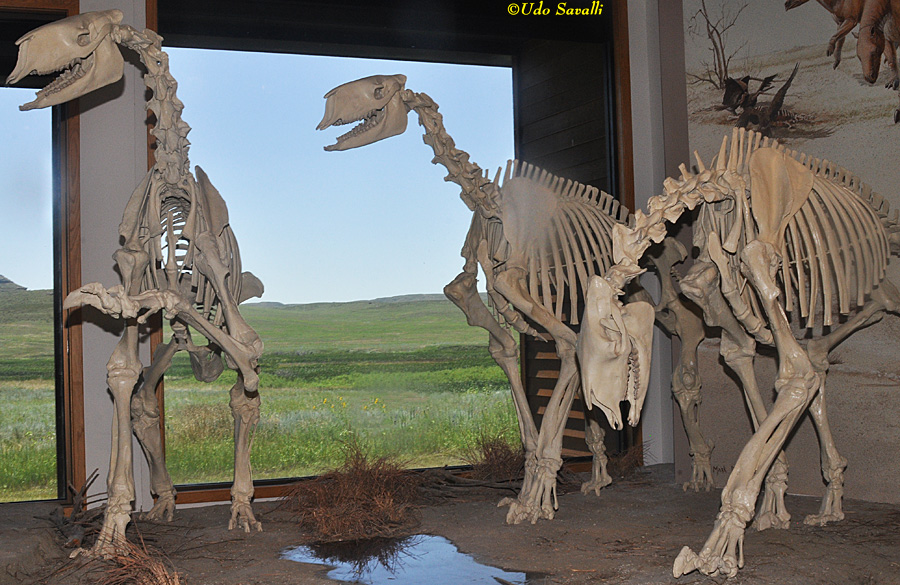
|
|
|
The artiodactyls are the even-toed ungulates, animals with hooves that bear their weight evenly on two toes, so they typically have either 4 or 2 toes per foot. The antique bison, Bison antiquus, is a member of the Bovidae (cow, goat, antelope family).
Order Artiodactyla (cows, deer, pigs, etc.)
La Brea Tar Pits, CA
Pleistocene
Page Museum, Los Angeles
|
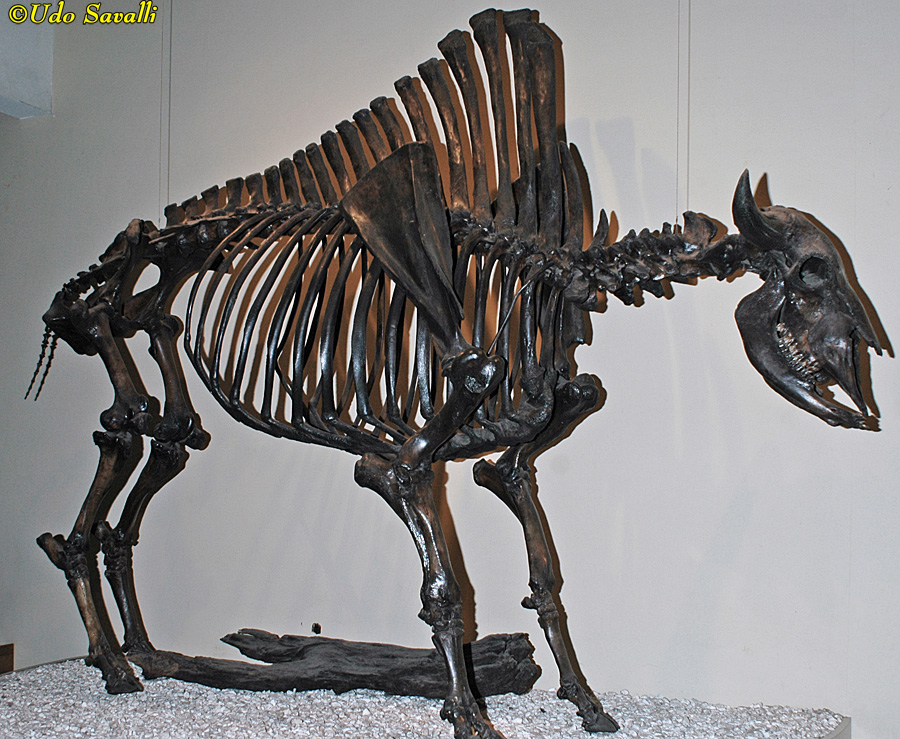
|
|
|
The proghorn family has only 1 surviving species, but in the past there was much more diversity, such as this Stockoceros conklingi.
Order Artiodactyla
Nueva Leon, Mexico
Late Pleistocene, 40-27 kya
Los Angeles Museum of Natural History
|
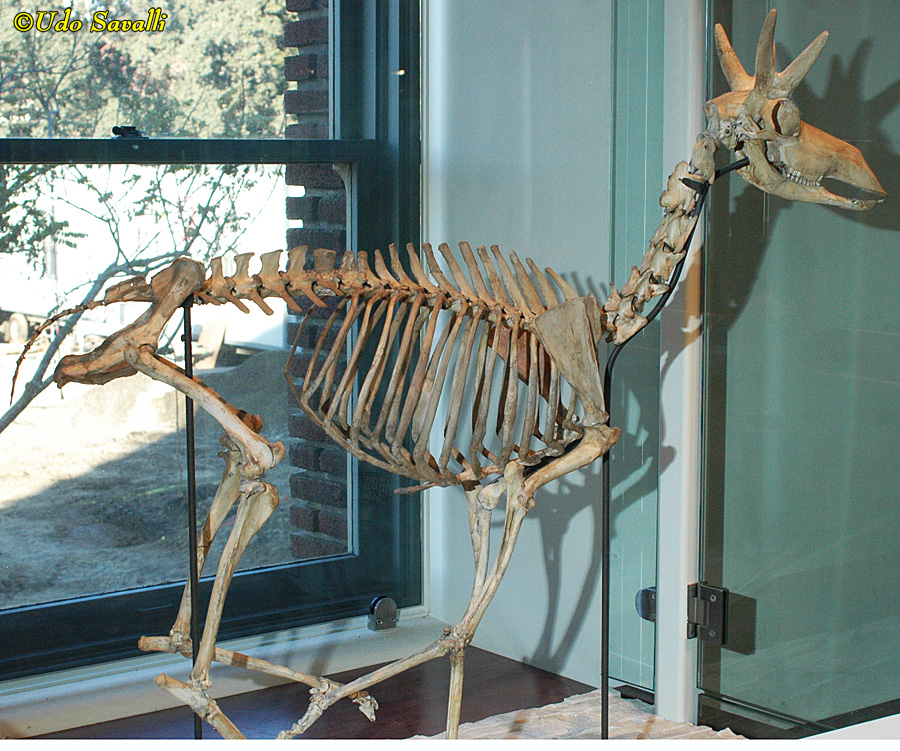
|
|
|
Frick's Mountain Deer, Navahoceros fricki.
Order Artiodactyla
Nueva Leon, Mexico
Late Pleistocene, 40-27 kya
Los Angeles Museum of Natural History
|
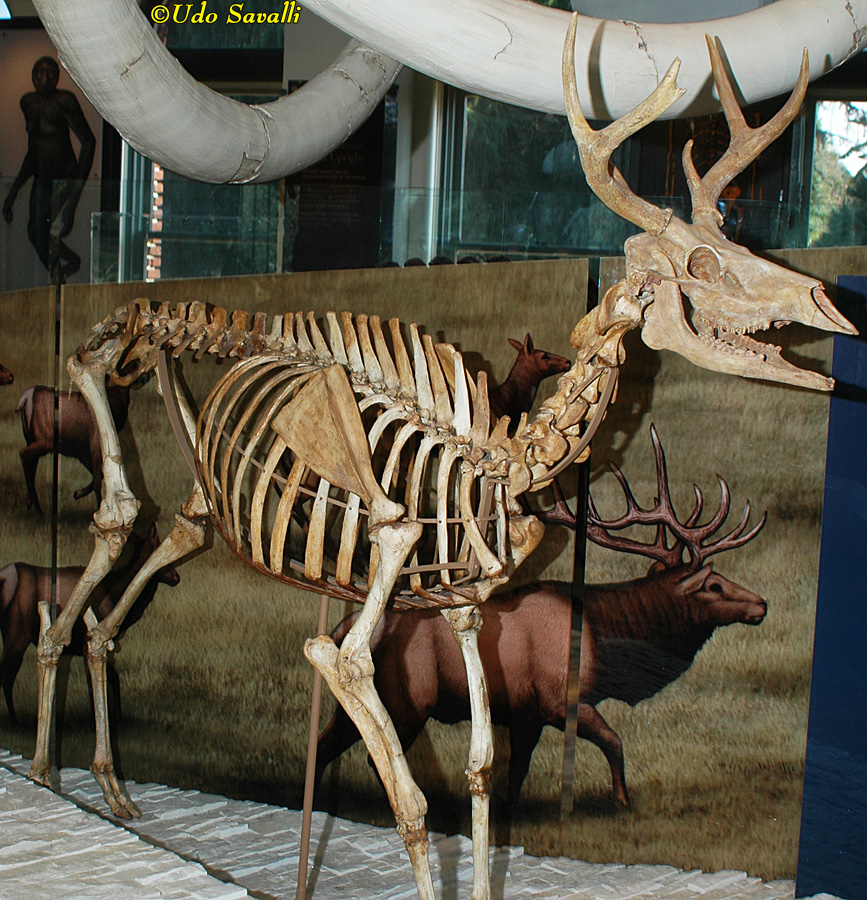
|
|
|
Synthetoceras tricornatus is a member of an extinct family.
Order Artiodactyla
Ogallala Formation, Donley Co., TX
Middle Miocene, 10 Ma
Denver Museum of Science & Nature
|
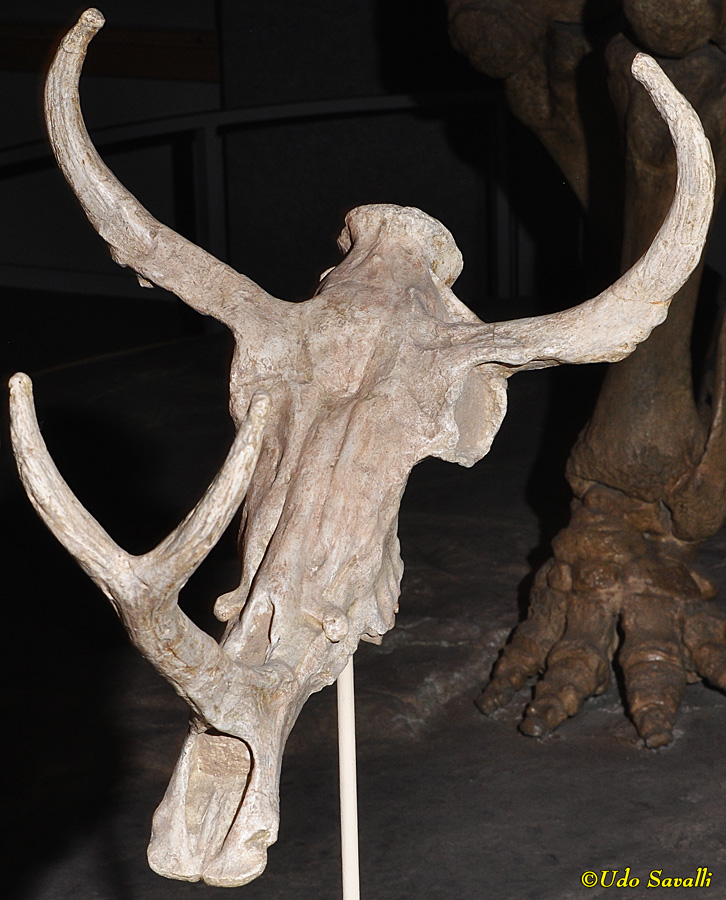
|
|
|
North America was once home to a variety of camel species, such as these Stenomylus hitchcocki (95% original fossil).
Order Artiodactyla
Harrison Formation, Sioux Co., NE
Early Miocene, 20 Ma
Denver Museum of Science & Nature
|
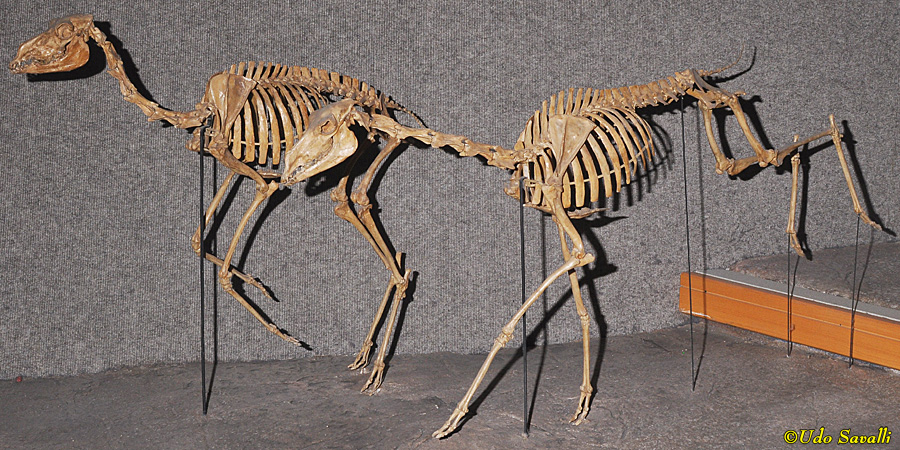
|
|
|
Yesterday's camel, Camelops hesternus.
Order Artiodactyla
New Mexico
11,000-3000 ya
New Mexico Museum of Natural History & Science
|
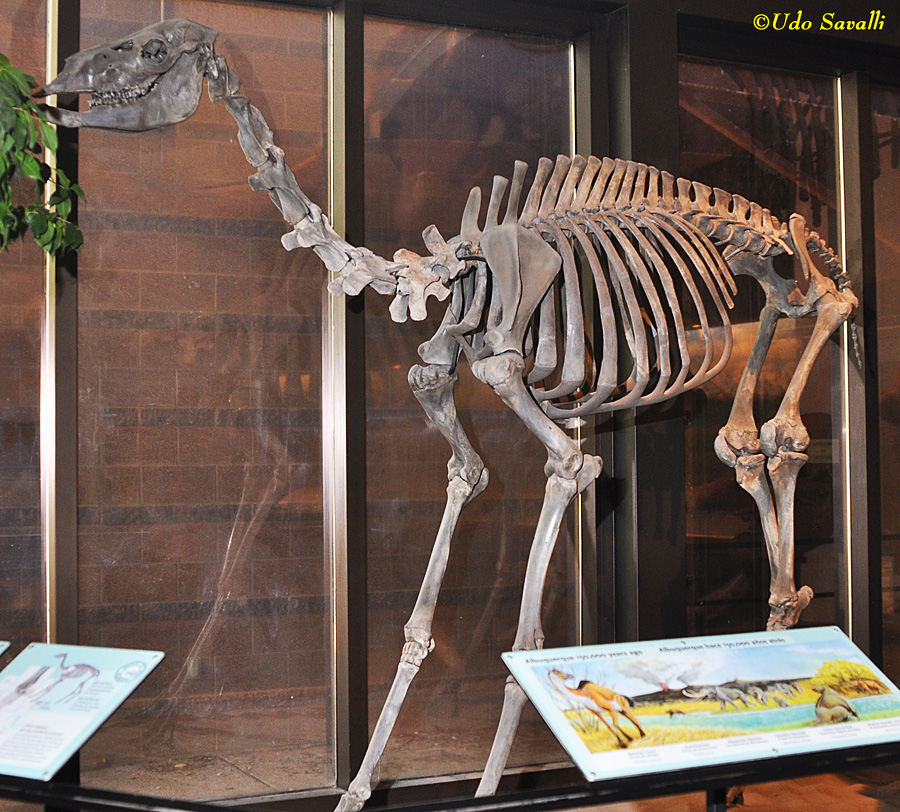
|
|
|
Poebrotherium wilsoni camel.
Order Artiodactyla
eastern Wyoming
Early Oligocene, 30 Ma
Los Angeles Museum of Natural History
|
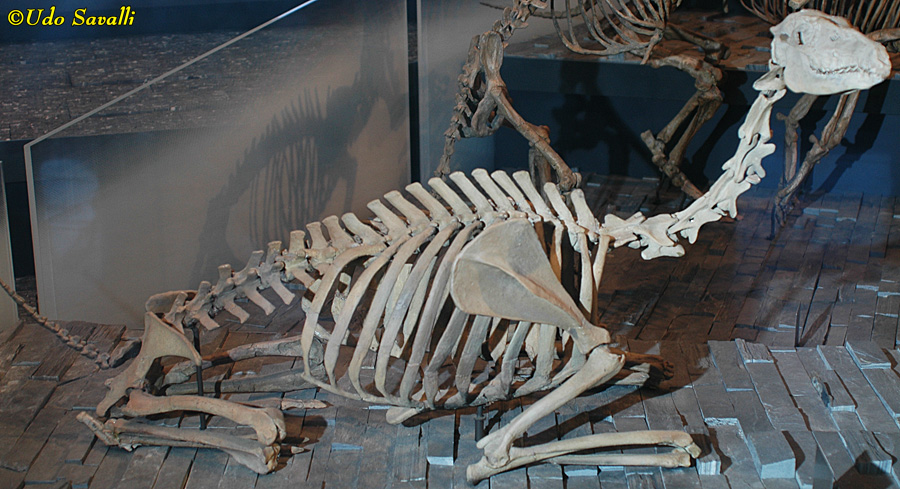
|
|
|
Titanotylopus nebraskensis camel.
Order Artiodactyla
western Nebraska
Late Pliocene, 3 Ma
Los Angeles Museum of Natural History
|
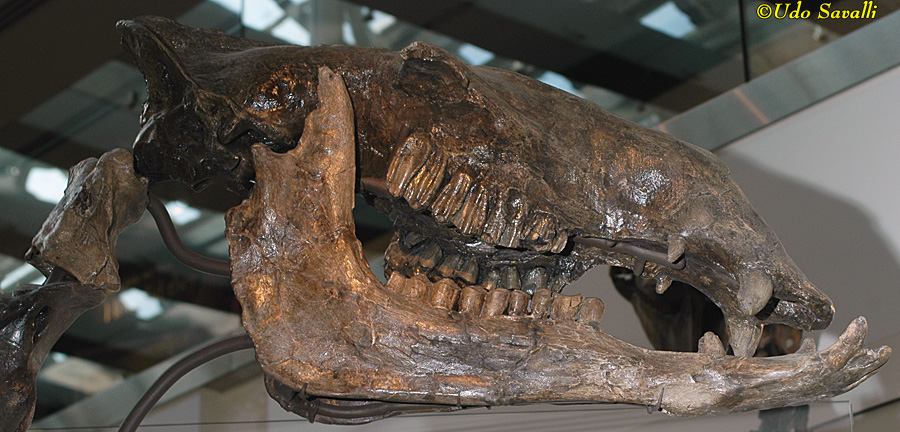
|
|
|
Oxydactylus campestris camel.
Order Artiodactyla
Nebraska
Early Miocene, 18 Ma
Los Angeles Museum of Natural History
|
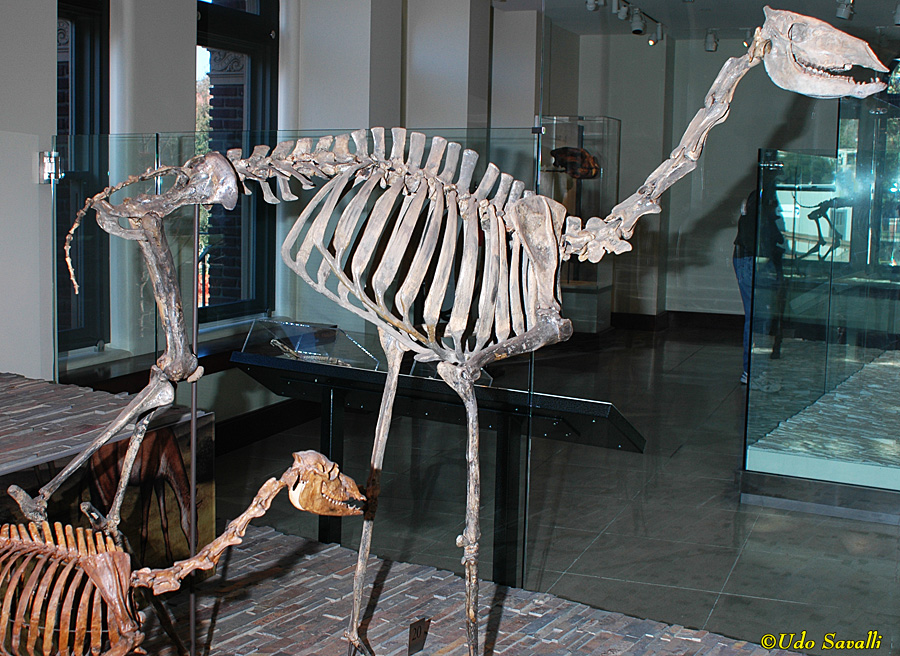
|
|
|
Oreodonts, such as these Merycochoerus magnus, are an extinct group of mostly sheep-sized artiodactyls that were abundant during the Miocene Epoch.
Order Artiodactyla
Marsland Formation, Dawes Co., NE
Early Miocene, 18 Ma
Denver Museum of Science & Nature
|
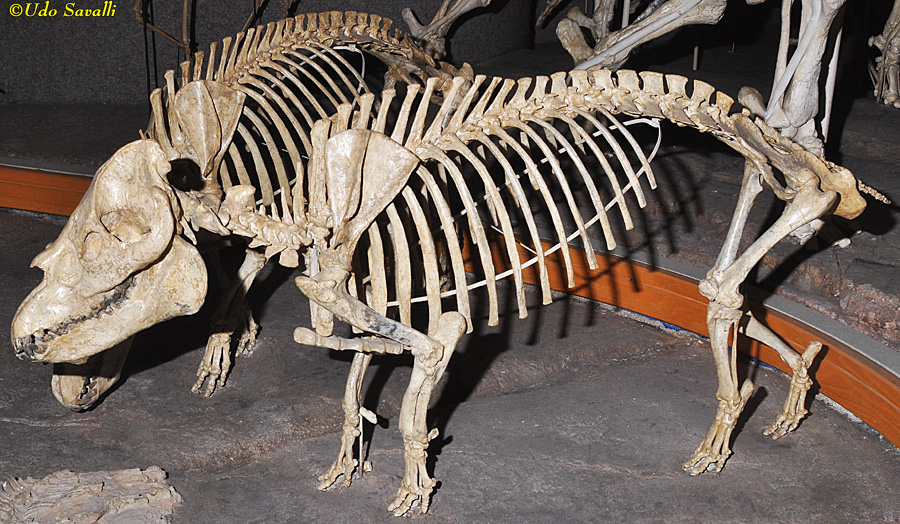
|
|
|
A primitive oreodont, Protoreodon walshi.
Order Artiodactyla
Santiago Formation, California
Eocene
San Diego Natural History Museum
|
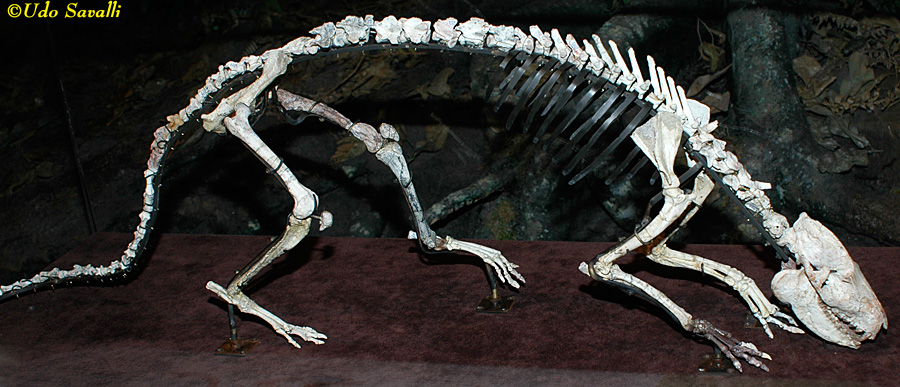
|
|
|
Miniochoerus gracilis oreodont.
Order Artiodactyla
Central Wyoming
Early Oligocene, 33 Ma
Los Angeles Museum of Natural History
|
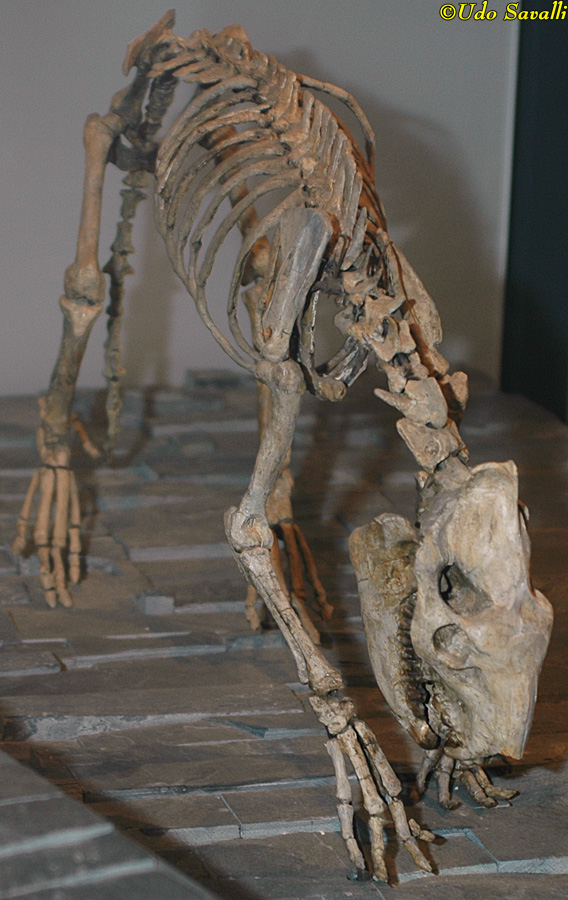
|
|
|
Skull of the oreodont Merycoidodon culbertsoni.
Order Artiodactyla
Oligocene
Black Hills Institute Museum, South Dakota
|
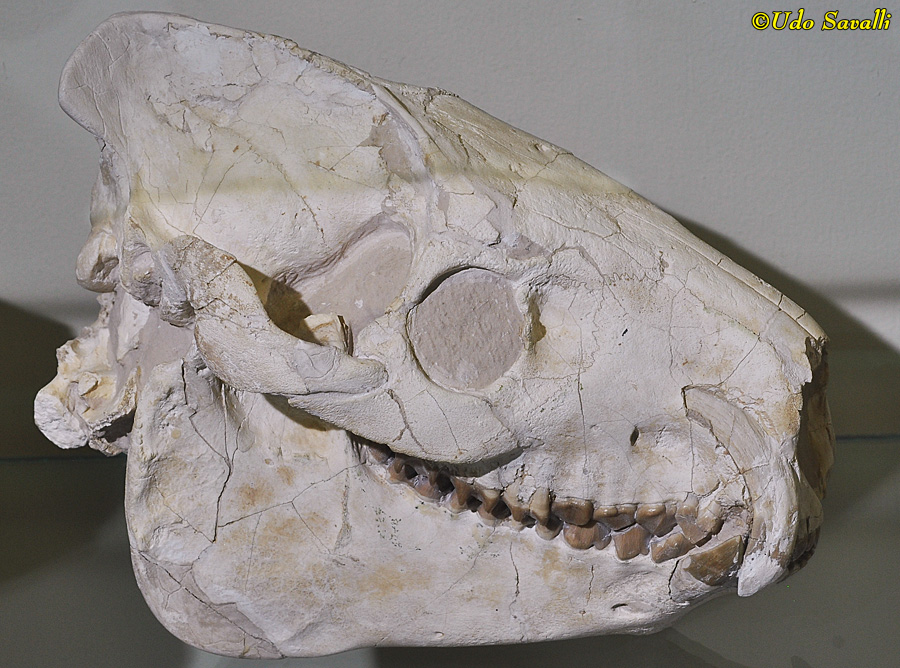
|
|
|
Entelodonts, such as these Archaeotherium mortoni, are an extinct group of pig-like artiodactyls nicknamed the "hell pigs", although they are not especially closely related to pigs and instead are more closely related to hippos and whales. They are thought to have been omnivorous.
Order Artiodactyla
White River Formation, Weld Co., CO
Late Eocene, 35 Ma
Denver Museum of Science & Nature
|
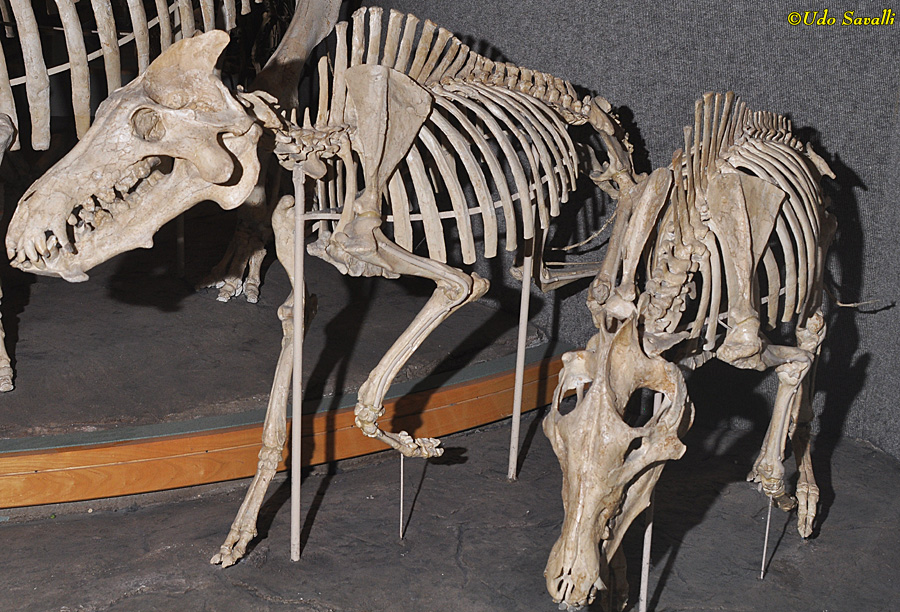
|
|
|
The entelodont Daeodon shoshonensis.
Order Artiodactyla
Harrison Formation; Agate Springs, NE
Early Miocene, 21-19 Ma
Agate Fossil Beds National Monument
|
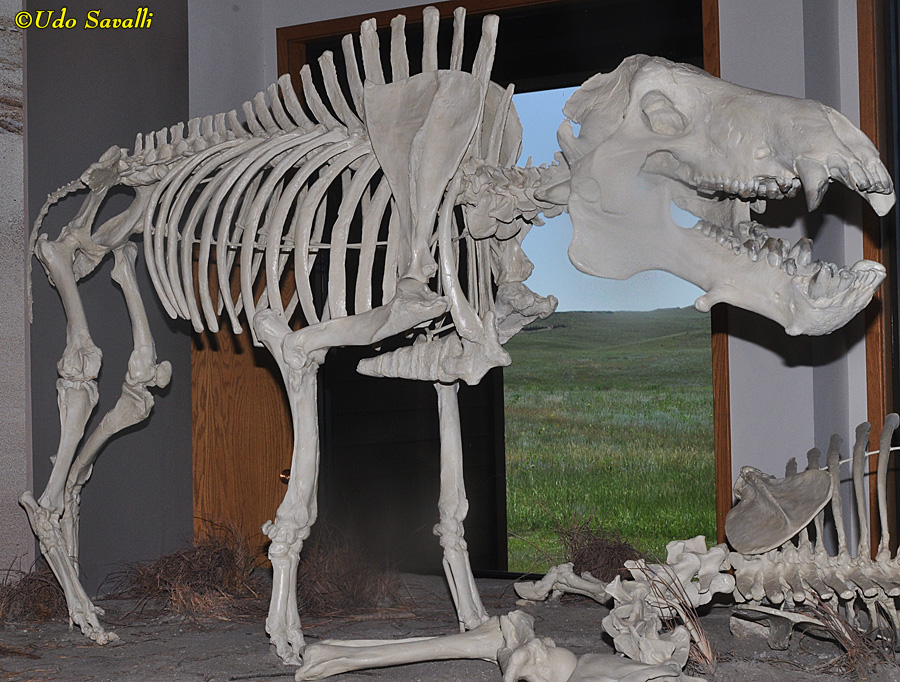
|
|
|
The cetaceans are fully aquatic mammals that evolved from an artiodactyl ancestor and are probably most closely related to the hippos. Pakicetus attocki is an ancestral whale that was only semi-aquatic.
Order Cetacea (whales & dolphins)
Kala Chitta Hills, Pakistan
Early Eocene, 52 Ma
Los Angeles Museum of Natural History
|
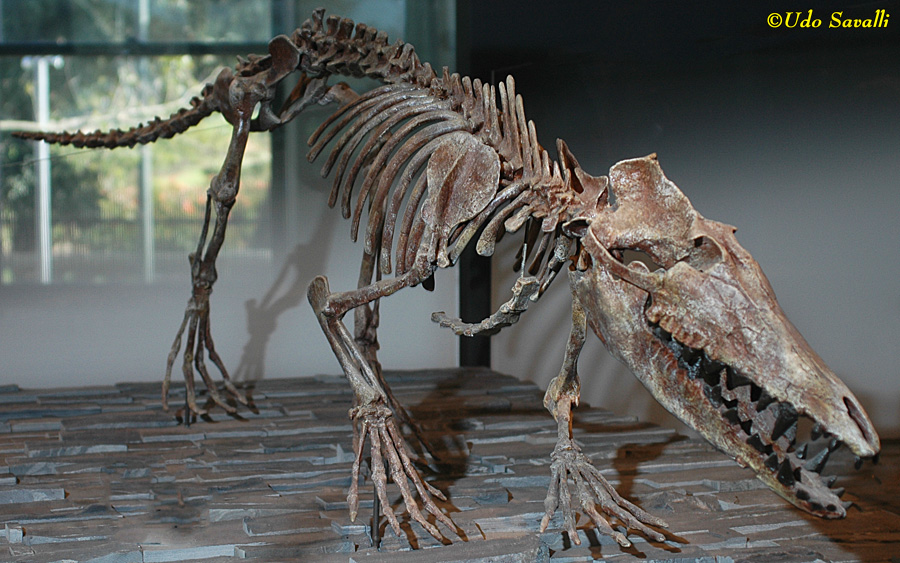
|
|
|
Basilosaurus cetoides was a giant, 20 m long primitive whale that still retained small hind limbs. It had a very elongated almost eel-like body. Unlike modern toothed whales, it had varied teeth with complex molars.
Order Cetacea
Southeastern North America
Eocene, 37 Ma
Museum of Ancient Life, Utah
|

|
|
|
Modern whales form two distinct groups, the toothed whales and the baleen whales. Toothed whales have from few to many conical teeth in an elongated snout, and a skull with a concave forehead (a fatty melon sits there to focus echolocation sounds, giving them a bulbous forehead in life).
This is a juvenile Morrice's sperm whale, Aulophyseter morricei
Order Cetacea
Sharktooth Hill, CA
Middle Miocene, 15 ma
Los Angeles Museum of Natural History
|
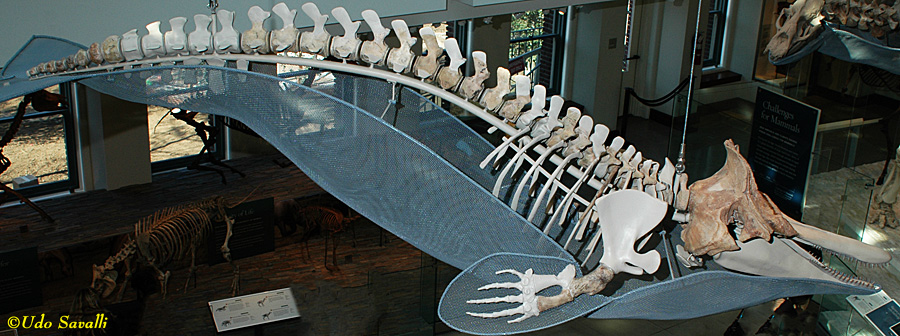
|
|
|
Some smaller toothed whales, such as this long-beaked river dolphin, Parapontoporia sternbergi, live in rivers.
Order Cetacea
San Diego Formation, California
Pliocene, 3.5 Ma
San Diego Natural History Museum
|
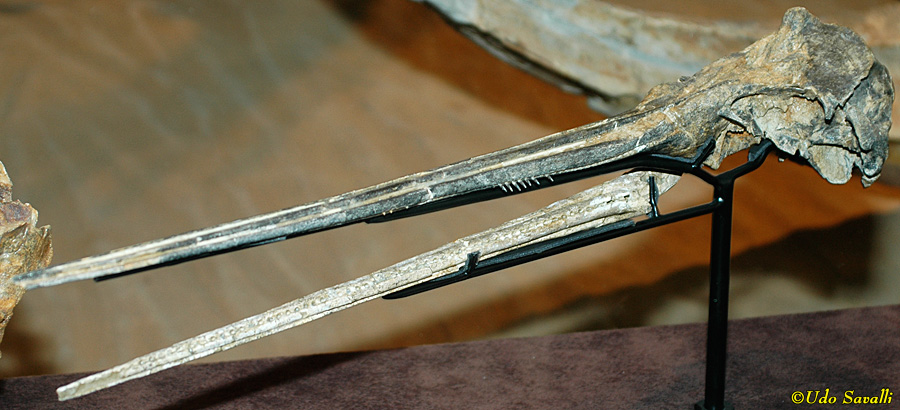
|
|
|
The baleen whales lack teeth and instead have sheets of keratin baleen that hang down from the upper jaw and filter food from sea water. Most baleen whales, such as this Plesiocetus sp., are larger than most toothed whales.
Order Cetacea
Pisco Formation, Dept Arequipa, Peru
Miocene, 10 Ma
Black Hills Institute Museum, South Dakota
|
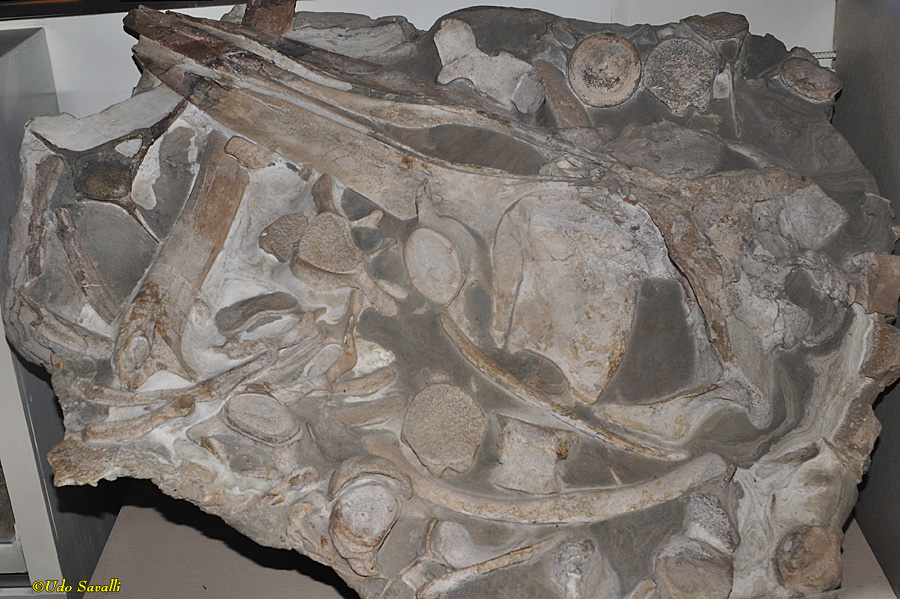
|
|
|
This skull belongs to an extinct but as of yet unnamed species of Gray Whale.
Order Cetacea
San Diego Formation, California
Pliocene, 3.5 Ma
San Diego Natural History Museum
|
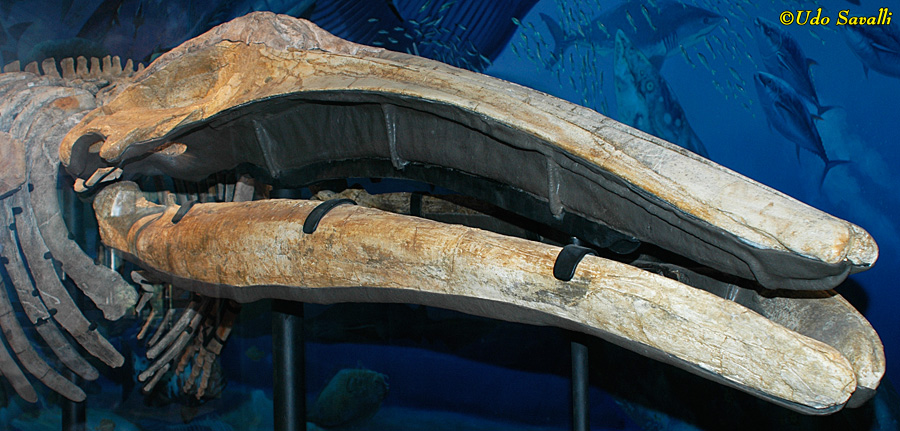
|




































